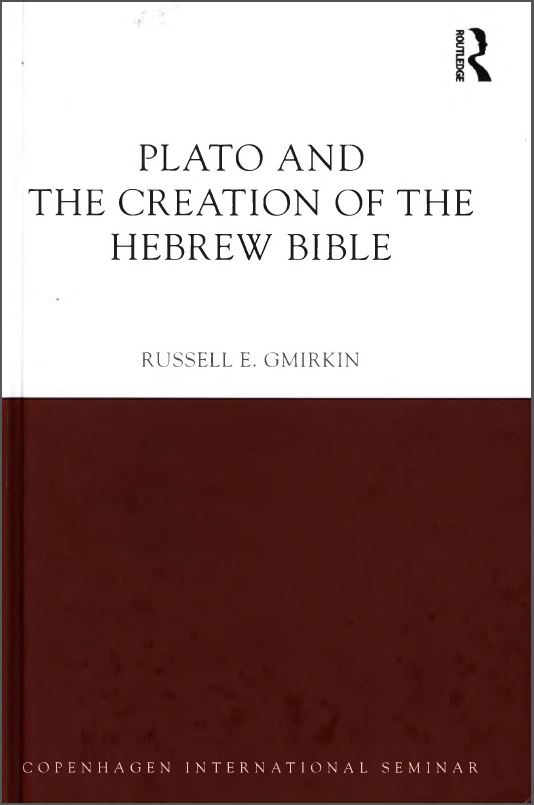 After the introduction (covered in my previous post) Russell Gmirkin divides chapter three of Plato and the Creation of the Hebrew Bible, “Biblical, Ancient Near Eastern and Greek Laws” into thematic sections:
After the introduction (covered in my previous post) Russell Gmirkin divides chapter three of Plato and the Creation of the Hebrew Bible, “Biblical, Ancient Near Eastern and Greek Laws” into thematic sections:
- laws relating to homicide,
- laws relating to assault,
- to theft,
- to marriage and inheritance,
- to sexual offences,
- to slavery,
- to social legislation (concerning resident foreigners, widows, orphans, the poor, disabled persons, etc.),
- to livestock,
- to property crimes and agricultural law,
- to commerce,
- to military law,
- to treason,
- to “religious” or laws concerning the sacred,
- and finally general ethical laws.
Each section documents details the three sources of laws — biblical, ANE and Greek — and concludes with a comparative discussion.
Near Eastern law codes included Hittite laws, the law codes of Eshnunna (LE), Hammurabi (LH), Ur-Nammu, Neo-Babylonian and Middle Assyrian laws and palace decrees and the Telepinu Edict. Points of Greek law are drawn from the writings of Plato, Aristotle, Lysias, Demosthenes, Xenophon, among others including Aeschylus and Andocides.
The chapter extends to 109 pages and includes 369 endnotes and a bibliography of over 140 titles.
This post looks at one of the above sections and Russell Gmirkin’s observations on the extent of the biblical laws’ similarity or otherwise to counterparts in the Near Eastern and Greek worlds.
All three geographical regions unsurprisingly stress the importance of lex talionis, of vengeance and deterrence as intended purposes of their legislation with respect to murder or even accidental killing.
But there are a number of significant points Greek and biblical law share that are nowhere found among our surviving evidence for laws in Mesopotamian and Asia Minor civilizations. These Greek-biblical similarities include
- the recognition of different psychological states in determining appropriate punishments
- the idea of blood pollution in the land
- the responsibility of the relatives of the victim to initiate prosecution of the murderer
- the possibility of at least temporary sanctuary in a temple
- and the option of exile
- stoning by the community
- the killing of an animal responsible for killing a person
- killing a burglar entering a house at night was justifiable homicide (ANE law required the execution of such a burglar but it is not stated that a house-owner himself could justifiably kill the burglar in the act)
“State of mind”
On the first point, the recognition of “state of mind” factors in determining penalties, Gmirkin writes:
Plato’s Laws contained an innovation on the Athenian laws for intentional homicide by distinguishing premeditated and unpremeditated homicide. Plato held that those murders committed with cold premeditation received a greater punishment in the form of a longer term of exile than those commit ted on impulse with no forethought, despite an equal degree of malice (Plato, Laws 9.866d-869e; cf. Chase 1933: 168-9,171-2; Loomis 1972: 93—4; MacDowell 1978: 115; Gagarin 1981: 35).
Here is part of Plato’s explanation:
For murder is committed in passion by those who, on a sudden and without intent to kill, destroy a man by blows or some such means in an immediate attack, when the deed is at once followed by repentance; and it is also a case of murder done in passion whenever men who are insulted by shameful words or actions seek for vengeance, and end by killing a man with deliberate intent to kill, and feel no repentance for the deed. We must lay it down, as it seems, that these murders are of two kinds, both as a rule done in passion, and most properly described as lying midway between the voluntary and the involuntary. None the less, each of these kinds tends to resemble one or other of these contraries; for the man who retains his passion and takes vengeance, not suddenly on the spur of the moment, but after lapse of time, and with deliberate intent, resembles the voluntary murderer; whereas the man who does not nurse his rage, but gives way to it at once on the spur of the moment and without deliberate intent, has a likeness to the involuntary murderer; yet neither is he wholly involuntary, but bears a resemblance thereto. Thus murders done in passion are difficult to define,—whether one should treat them in law as voluntary or involuntary. The best and truest way is to class them both as resemblances, and to distinguish them by the mark of deliberate intent or lack of intent, and to impose more severe penalties on those who slay with intent and in anger, and milder penalties on those who do so without intent and on a sudden. For that which resembles a greater evil must be more heavily punished, that which resembles a lesser evil more lightly. So our laws also must do likewise. . . . .
Examples follow:
If a man with his own hand slay a free man, and the deed be done in rage without deliberate intent, he shall suffer such other penalties as it is proper for the man to suffer who has slain without passion, and he shall be compelled to go into exile for two years, thereby chastising his own passion.
Compare Exodus 21:13
12 “He who strikes a man so that he dies shall surely be put to death. 13 However, if he did not lie in wait [i.e. there was no premeditation], but God delivered him into his hand [i.e. indicating this was an instance of intentional homicide], then I will appoint for you a place where he may flee.
The explanatory phrases I have added are from Gmirkin’s endnotes.
Exile
We also have in this example a reference to exile as a form of penalty, something unknown in our records of ANE laws. Continue reading “Plato and the Hebrew Bible: Homicide Laws”
